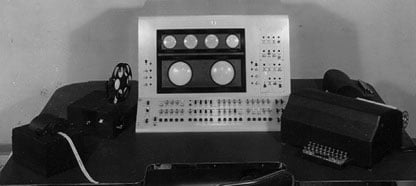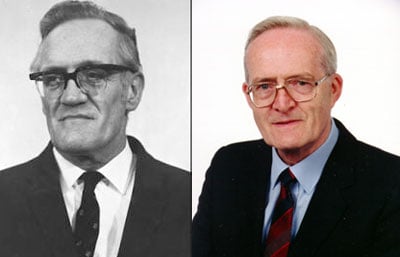
Five Facts about Ferranti Mark 1 Computer
- Mark 1 displayed a 20-bit word as a single line of dots of electric charges on the surface of a Williams tube display, with each cathode tube storing 64 lines of dots.
- The Ferranti Mark 1 specification resembled the final Manchester Mark 1 standard exceptionally closely. To improve dependability, Ferranti Mark 1 reinstated only one page per CRT.
- Numbers were stored in two words, but Ferranti Mark 1 stored instructions in a single word.
- The main memory was made up of eight tubes, each of which could store one page of 64 words.
- A hoot command was included in the Ferranti Mark 1’s instruction set, allowing the system to provide audible feedback to its operators.
The History of Ferranti Mark 1 Computer: What to know
The machine was invented by Ferranti of the United Kingdom and is based on the Manchester Mark 1, designed by Freddie Williams and Tom Kilburn at the University of Manchester. The significant differences between them were the size of primary and secondary storage, a faster multiplier, and more instructions.

A full-scale version of the Small Scale Experimental Machine (aka the Baby) was underway only two months after the successful test run in June 1948. Ferranti was researching commercial manufacture, albeit advancement to commercial production was far from assured due to financial difficulties. On February 12, 1951, The makers handed the first machine to the University of Manchester. It later sold seven revised versions.
A 20-bit word was stored as a single line of dots of electric charges settled on the surface of a Williams tube display, with each cathode tube storing 64 lines of dots. The main memory consisted of eight tubes, each of which could keep one page of 64 comments. The single 80-bit accumulator (A), the 40-bit “multiplicand/quotient register” (MQ), and eight “B-lines,” or index registers, were all stored in other tubes, which was one of the Mark 1 design’s distinctive features. Ferranti Mark 1 could likewise use two 40-bit words to address the accumulator. An offset value was saved in secondary storage using an extra 20-bit word per tube.
A 512-page magnetic drum with a 30 millisecond revolution period was used for secondary storage, containing two pages per track. The drum had eight times the storage capacity of the original Manchester design.
The instructions employed a single address format with operands changed and stored in the accumulator like the Manchester machine. The total number of instructions was around fifty. Ferranti Mark 1 could complete in a multiplication around 2.16 milliseconds in the new parallel unit, which had a vital cycle time of 1.2 milliseconds (about 5 times faster than the original). The multiplier used nearly a fifth of the machine’s 4,050 vacuum tubes.
Ferranti Mark 1 Computer Versions: Each Edition
Mark 1 Star
Following the initial two computers, an improved version of the design, known as the Ferranti Mark 1 Star or the Ferranti Mark 1*, became available. The improvements mainly focused on cleaning up the instruction set to improve usability. The new machines translated digits to holes instead of the earlier mapping from holes to binary numbers, which produced a considerably simpler mapping.
Several instructions that used the index registers also had side effects that caused odd programming, but the makers adjusted these to remove them. Similarly, the original machines’ JUMP instructions landed “one before” the actual address for reasons related to the odd index behavior. Still, these were beneficial in theory and highly inconvenient in practice, so they were similarly adjusted. Finally, as is customary for most numeric writing, five-bit values were output with the least significant digit to the right. The ease of programming the newer machines were substantially increased due to these and other enhancements.
The weight of the Mark 1/1* was 10,000 pounds (5.0 short tons; 4.5 t). Between 1953 and 1957, at least seven Mark 1* computers were delivered to Shell labs in Amsterdam. Another was installed at Avro’s Chadderton factory near Manchester, making airplanes. People utilized this for a variety of projects, including the Vulcan. The Ferranti Mark 1 and Mark 1* were designed by Conway Berners-Lee and Mary Lee Woods, the parents of Tim Berners-Lee, the inventor of the World Wide Web.
The Public Response
Mark I’s professional life was fruitful, both publicly and privately. People primarily used the machine in applied science and engineering applications. One of the machines was shipped to Canada, housed at the University of Toronto. One of its first assignments was to perform all civil engineering calculations for the Saint Lawrence Seaway, a series of locks, canals, and dams that runs between Canada and the United States.